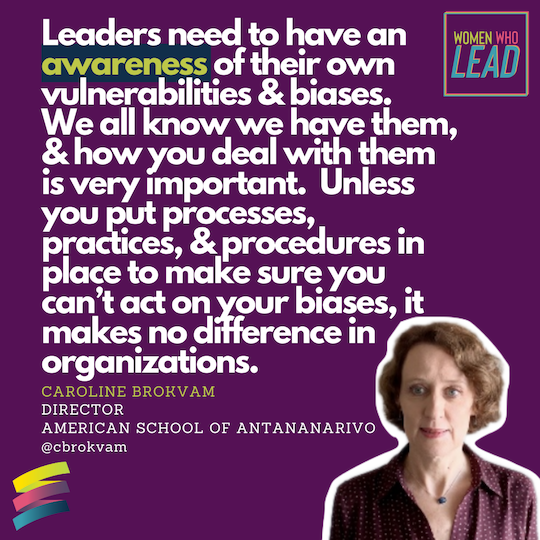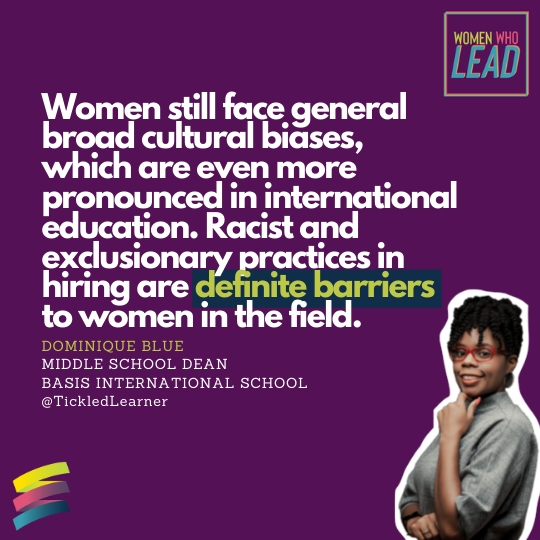
Realities Women Face in Pursuing a Leadership Career
Based on data from Academy for International School Heads (AISH), the percentage of women in HoS positions has not changed from 28-32% over the last 12 years. We may perceive more women in leadership positions, we may even see more at the lower levels of leadership, but, as Deb Welch said in my interview with her for the Women Who Lead project: “the pipeline becomes a trickle at the top.”

Many of us acknowledge that diversity in international schools is a foundational value. However, in practice, we rarely see that diversity reflected in our leadership positions. If you believe that needs to change, it’s time to take action.
The Women Who Lead Project
During the first half of 2020, I interviewed over 70 successful women leaders from all areas of education, including Heads of School, Principals, Curriculum Leaders and Influential Leaders like consultants and leaders of education organizations. In these conversations, we discussed:
- How to recognize and tap into your potential as a leader;
- The unique challenges women face in pursuing a leadership position;
- The nuances of interviewing for a leadership position, particularly making the jump from divisional leadership to Head of School;
- Handling confrontation as a leader who identifies as a woman;
- Finding a sense of balance;
- Finding focus and priorities as a busy leader; and
- Essential skills for leaders who identify as women.
The Unique Challenges Women Face
One of the key themes that emerged is that there are specific and unique challenges that women face in pursuing a leadership role, including:
- unconscious biases that influences decision-making at every level unless systems and practices are put in place to check them
- discrimination against Women of Color, and non-native English speakers – both overt and covert
- concerns about hiring women due to their need to balance family and work (questions not raised of male leaders)
- dealing with impostor syndrome and the lack of representation seen in daily life, leading women to hesitate to apply for positions although they are qualified
- navigating the “old boys club” of leadership where positions are rotated between the same group of male Heads
While this appears bleak (and truthfully it’s not surprising), there are so many things we can do to support, empower and advocate for women seeking leadership positions. And of course, there’s so much aspiring leaders can do to prepare themselves for this journey.

Hearing the real-life stories of women who have succeeded because of their willingness to embrace the challenge and the rewards of leadership is inspiring. The over 70 women I interviewed didn’t start out as leaders from birth – they each took their own unique paths, many of whom shared similar experiences along the way. Better understanding the path to leadership for all women is essential for all leaders and all aspiring leaders.
Relevant for ALL Leaders
If you are serving, or aspire to serve, in a leadership captivity, make time to explore these conversations, to reflect on your practice and choices as a leader, and to identify opportunities to empower leadership pathways for those who are interested.

All 70 conversations, edited and organized into 8 key themes are available within the Women Who Lead program. Alongside these unique stories are highly curated companion research and resources to put those experiences into a wider context. Each key theme includes reflection prompts differentiated for both current and aspiring leaders to help you identify your next step. The Women Who Lead program is available now: click here for more details and to sign up today!


0 responses on "Realities Women Face in Pursuing a Leadership Career"